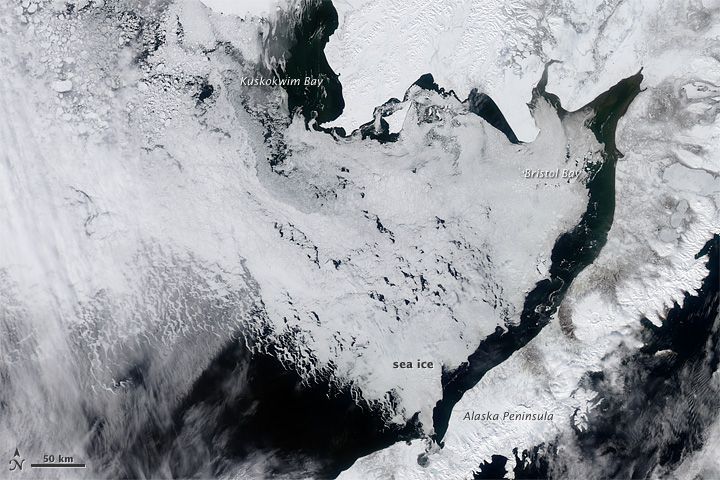
Bering Sea Sees Surprising Record Ice Cover

Arctic sea ice has persistently dwindled over the last three decades, yet sea ice set record highs in waters around Alaska this past winter.
Ice in the Bering Sea not only covered more area than usual, it also stuck around longer, bucking the downward trend in sea ice cover observed since 1979, when satellite records for the region began.
The Arctic as a whole had below-average sea ice cover during the 2011 to 2012 winter season. At its maximum, reached in mid-March, sea ice covered 5.88 million square miles (15.24 million square kilometers), the ninth lowest in the satellite record.
Yet Alaskan waters were choked with ice.
Sea ice cover in the Bering Sea was well above normal for much of the season, and reached a record-high extent in March 2012. In addition, ice surrounded the Pribilof Islands, tiny volcanic islands in the middle of the Bering Sea, for a record number of days this winter.
On May 3, ice had surrounded St. Paul Island for 103 days, up from the record of 100 days, set in 2010.
The record ice numbers were fueled by two main factors: low temperatures and strong winds from the north.
Sign up for the Live Science daily newsletter now
Get the world’s most fascinating discoveries delivered straight to your inbox.
Persistent winds pushed ice from the Arctic Ocean down toward the Bering Strait, which acted as a temporary dam, trapping the sea ice in a bottleneck.
The sea ice continued to pile up, and the icy barrier eventually collapsed, allowing the trapped ice to surge southward into the Bering Sea.
Alaska's mainland spent this last winter in the grip of bone-chilling low temperatures and record-high snowfalls, the result of cyclical climate conditions that kept much of the lower 48 states at record high temperatures, while plunging Alaska into a deep freeze that helped keep the ice frozen.
Follow OurAmazingPlanet for the latest in Earth science and exploration news on Twitter @OAPlanet and on Facebook.












